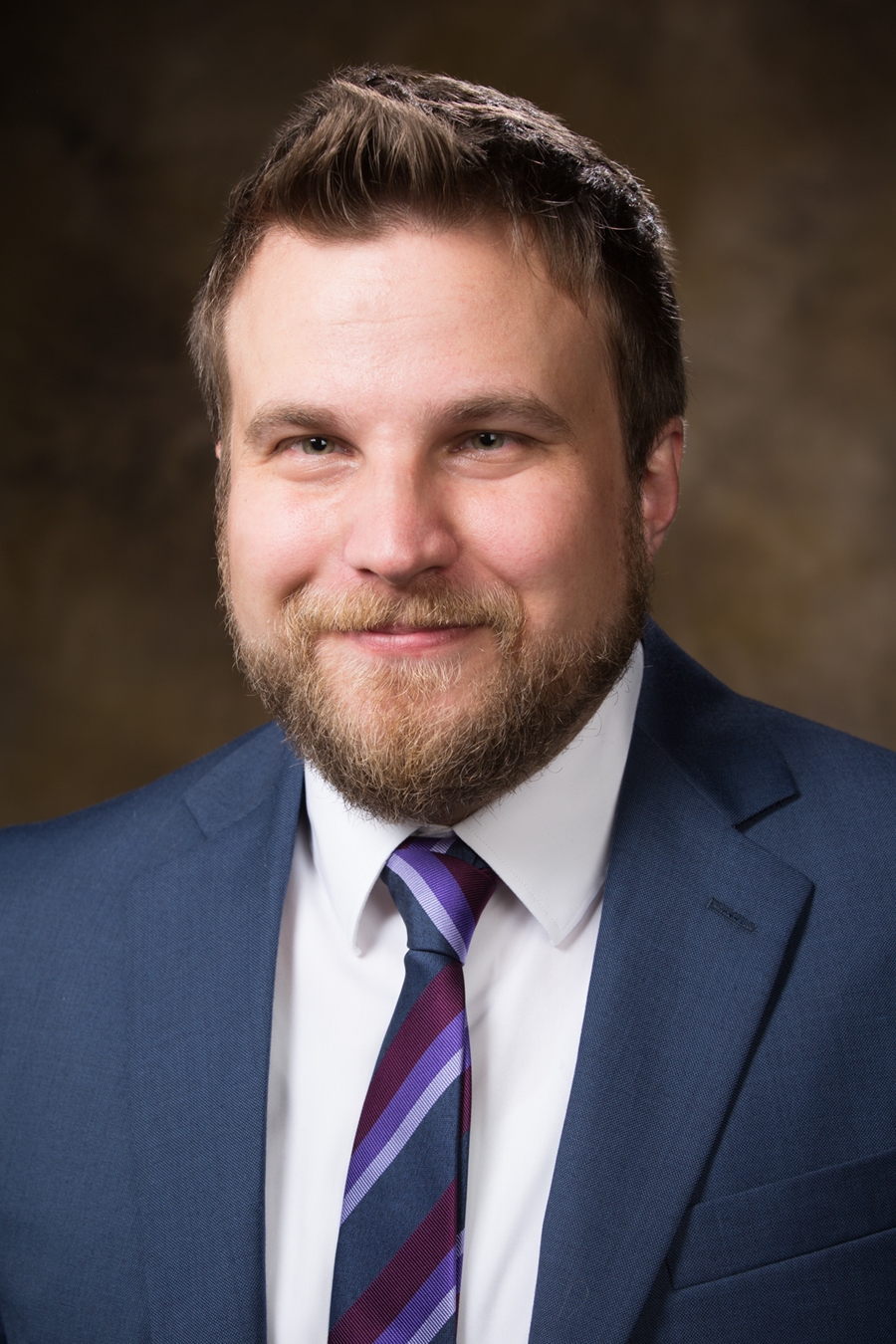New Study Shows Tissue Healing Response Following a Heart Attack
FAYETTEVILLE, Ark. – In the weeks following a heart attack, the injured heart wall acquires more collagen fibers that are significantly less stiff due to a lack of fiber crosslinks, according to a new study by a University of Arkansas researcher and his colleagues at Tufts University. The changes to the cardiac tissue may lead to excessive scar formation and ultimately heart failure.
The discovery was made by a team that included Kyle Quinn, assistant professor of biomedical engineering at the U of A, and Irene Georgakoudi and Lauren Black, associate professors of biomedical engineering Tufts. Their findings were published in Nature Publishing Group's Scientific Reports.
Using multiphoton microscopy, a powerful imaging technique, the researchers examined changes in composition and mechanical properties of the heart wall in the weeks following a heart attack. Through a process of tissue decellularization, they studied the fiborous load-bearing microstructure around cardiac cells and found that following a heart attack the newly-forming scar tissue was made up of collagen fibers that were thinner, less naturally fluorescent, and more aligned than in healthy tissue. These fiber properties measured with multiphoton microscopy were associated with a poor mechanical response compared to healthy cardiac tissue.
"With multiphoton microscopy, we can visualize both collagen fiber organization and crosslinking status," Quinn said. "Clearly, after a heart attack, the extra-cellular matrix was less stiff due to the deposition of new collagen fibers that lacked crosslinks."
The ability to predict the mechanical environment of the heart wall through these imaging techniques may help researchers understand how scarring, after a heart attack can ultimately lead to heart failure, Quinn said. Quinn will continue working on the quantitative imaging methods to understand the relationship between the structure and mechanical function of biological tissues. His goal is to apply these methods to problems with skin and wound healing.
"Our skin shares many similar characteristics with the heart in its healing response following an ischemic injury," Quinn said.
Topics
Contacts
Kyle Quinn, assistant professor
Department of Biomedical Engineering
479-575-5364,
kpquinn@uark.edu
Matt McGowan, science and research communications officer
University Relations
479-575-4246,
dmcgowa@uark.edu
Headlines
U of A Bands to Hold Three Nights of Concerts
The Symphonic Band, the Wind Symphony, the 4 O'Clock and 5 O'Clock Bands and the Wind Ensemble will perform April 21-23 at the Faulkner Performing Arts Center on the U of A campus.
Honors College to Host 'Best in Show' Dog Celebration
The campus and community are invited to celebrate our furry friends with popsicles, water and dog treats from 3-4 p.m. Thursday, April 25, in the Gearhart Courtyard.
New Parasite Affecting Canadian Partridges Named for Arkansas Poultry Scientist
A long-time colleague in Canada gave a newly found parasite the scientific name Eimeria hargisi in honor of U of A poultry science researcher Billy Hargis.
U of A School of Law Student Selected for Ms. J.D. Leadership Academy Intensive
Tristan Branstetter-Thomas, a second-year law student, was one of 30 students from across the country chosen to participate in the leadership academy at the Northwestern Pritzker School of Law in Chicago.
Needy Honored as Distinguished Alumna of University of Pittsburgh Engineering College
College of Engineering Dean Kim Needy was among seven alumni of the University of Pittsburgh Swanson School of Engineering honored in April as part of the 2024 Class of Distinguished Alumni.





